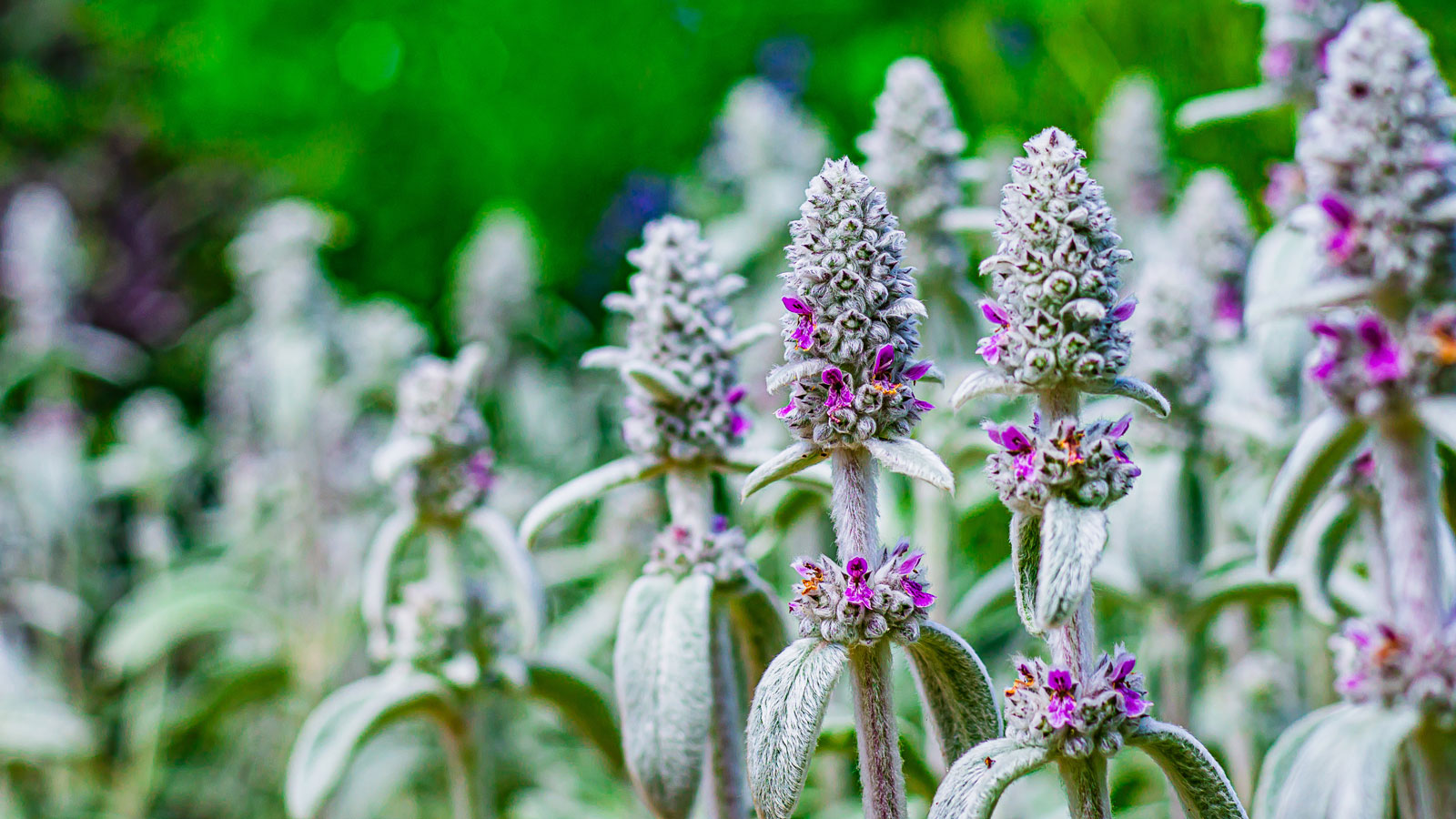
A flower bed featuring lamb's ears as part of your planting design will feel relaxed and spontaneous, either as the main story or to complement other flowers. These lovely herbaceous perennials will add a soft feel with their waves of velvety gray-green leaves, while the tall spikes of pink-purple flowers add a shapely focal point that catches the eye.
Lamb’s ears feel as good as they look, and you won't be able to resist running your fingers through their inviting foliage. This means they are a wonderful addition to a sensory garden because of their tactile appeal. They work well in container garden combinations too, acting as a soft contrast to brightly colored annuals that favour the same dry growing conditions.
As well as being easy to grow and low maintenance, lamb's ears are soaring in popularity as a great plant to choose for climate change because of its resilience to difficult conditions. So if you love naturalistic planting design find out how to add this pretty ornamental plant to the rest of your ideas with our lamb's ears care and growing guide. Once this lovely plant has settled in it will become a reliable favorite for years to come.
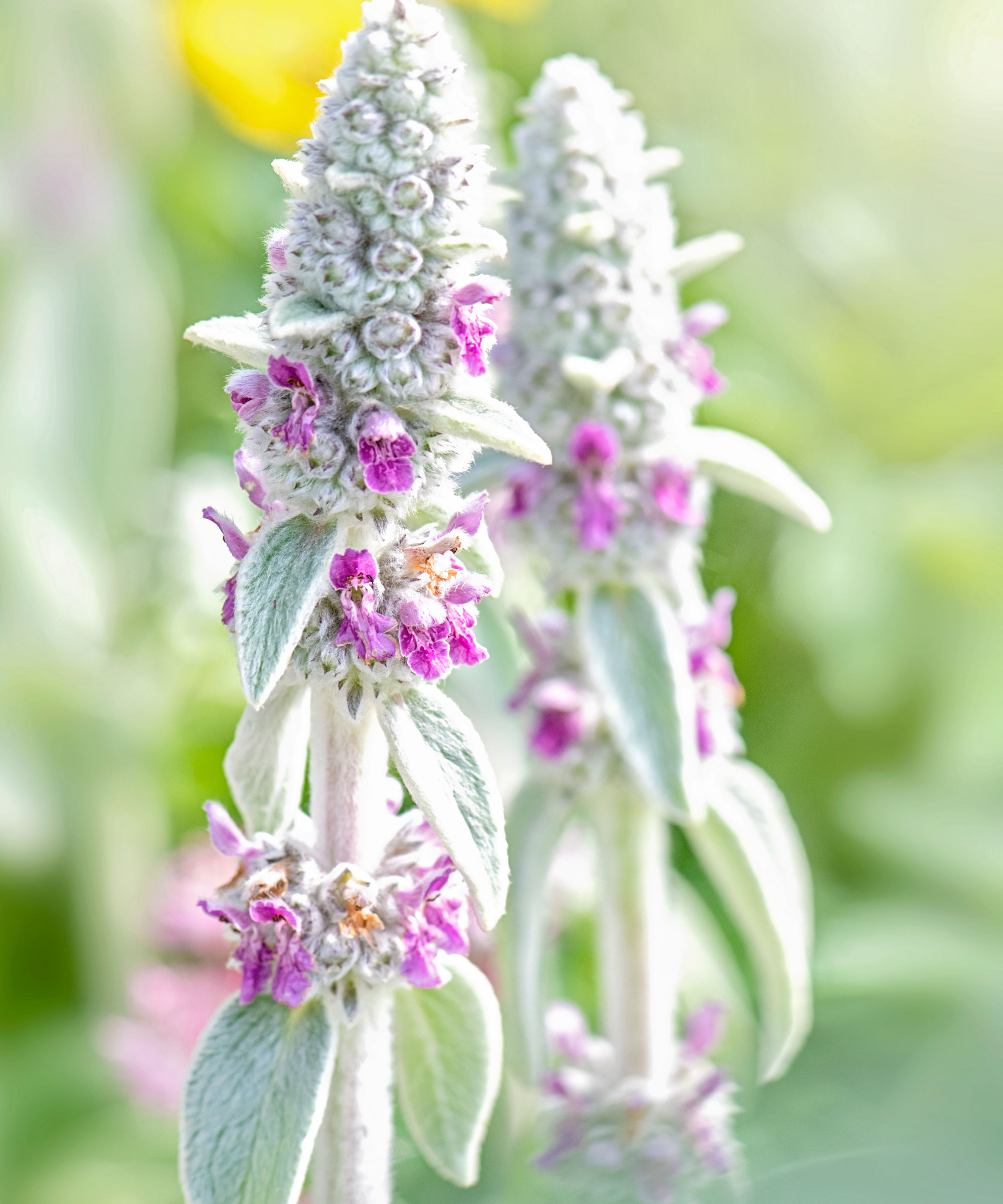
Lamb's ears: key facts
- Botanical name: Stachys byzantina
- Family: Lamiaceae
- Plant type: Herbaceous perennial
- Mature size: Up to 18 inches tall; up to 36 inches wide
- Position: Full sun
- Soil type: Well-drained
- Time of year to plant: Spring
- Flowering time: Spring and summer
- Flower color: Pink-purple
- Hardiness zones: USDA 4-9
Getting started – how to work lamb's ears into your planting
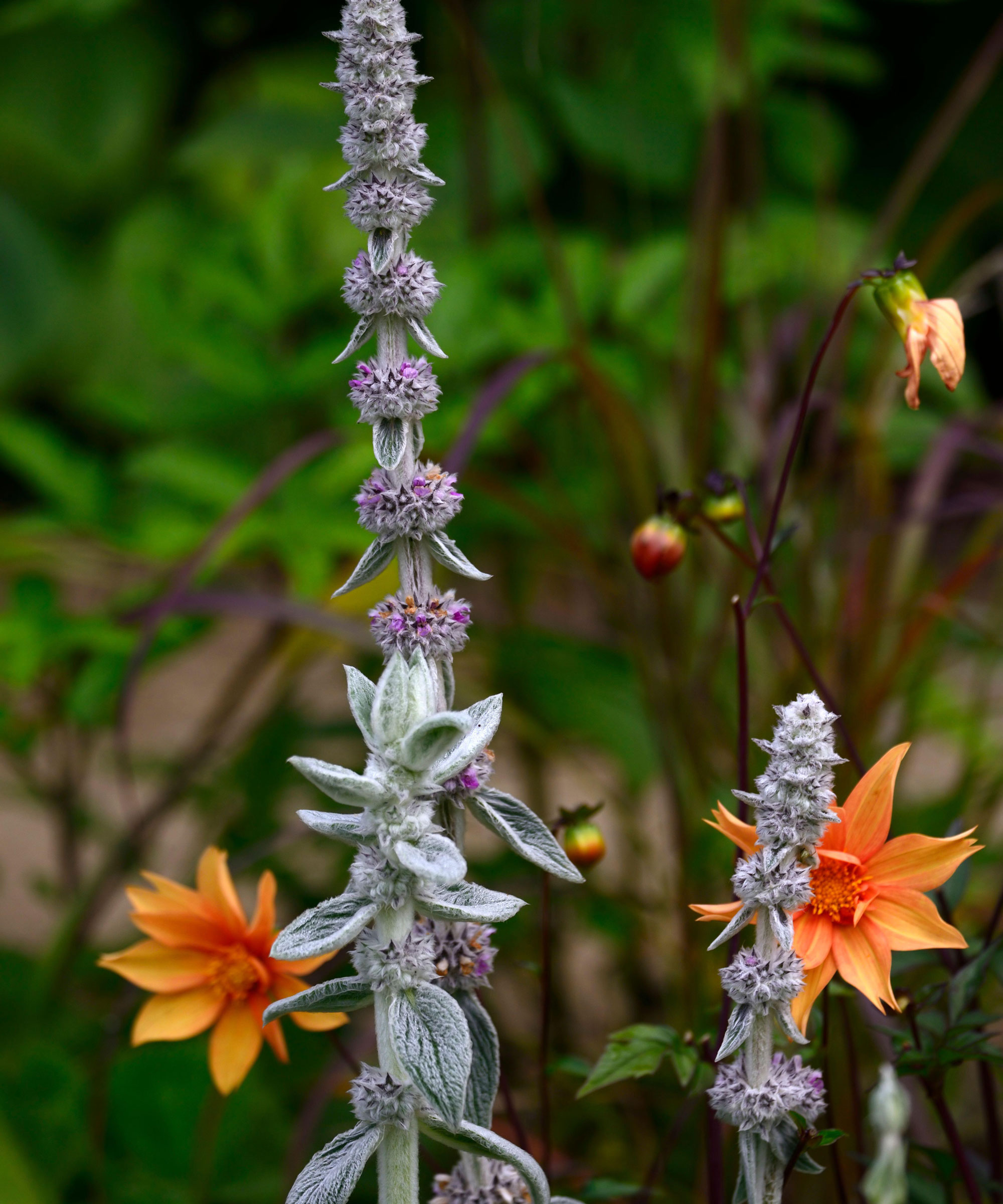
'Lamb's ears have velvety-soft simple silver leaves that look great in the front of a flowerbed,' says horticultural expert Jenny Rose Carey, author of The Ultimate Flower Gardener's Guide, available from Amazon. 'In summer they send up a whorled flower stalk with little pink-purple blooms that are loved by pollinators. They are an essential choice for a sensory garden.'
In addition, lamb's ears are also a good choice for drought-tolerant planting ideas, as well as plants for pollinators. They will repeat flower right through summer, and look fabulous combined with other silver foliage plants such as lavender and achillea.
In dry gardens lamb's ears can be used as ground cover to weave in between taller plants like Nepeta, Verbena bonariensis and Russian sage for a relaxed, informal planting scheme in a complementary color palette.
The silver-gray foliage also looks stunning planted around bright flower blooms to form a soft backdrop. 'Gray has the effect of 'muting' colorful plants and are often the calm, binding factor among them,' says internationally acclaimed garden designer Jacqueline van der Kloet.
'They are excellent partners for summer flowering bulbous plants such as eye-catching bicolor dahlias, canna with terracotta leaves, or the cheerful colors of Anemone coronaria.' Jacqueline's latest book Growing Bulbs in the Natural Garden can be found here on Amazon, and is packed with even more planting inspiration ideas.
Once established, lamb's ears require very little maintenance but it's still a good idea to keep it happy with our lamb's ears care and growing guide.
When to plant lamb's ears

Planting lamb's ears is easy and the best time to do it is in spring, once any danger of frost has passed. You can continue to plant lamb's ears right through summer and into fall. If you choose to plant it later in the season just make sure you give plants enough time to establish a strong and healthy root system before winter weather sets in.
Lamb's ears can also be propagated from seed. Sow seeds in late winter, around 8-10 weeks before last frost. Press the seeds into the soil but do not cover. Keep moist until germination, then transplant seedlings outdoors in spring. Generally it's easier to propagate by division in spring or fall.
How to plant lamb's ears
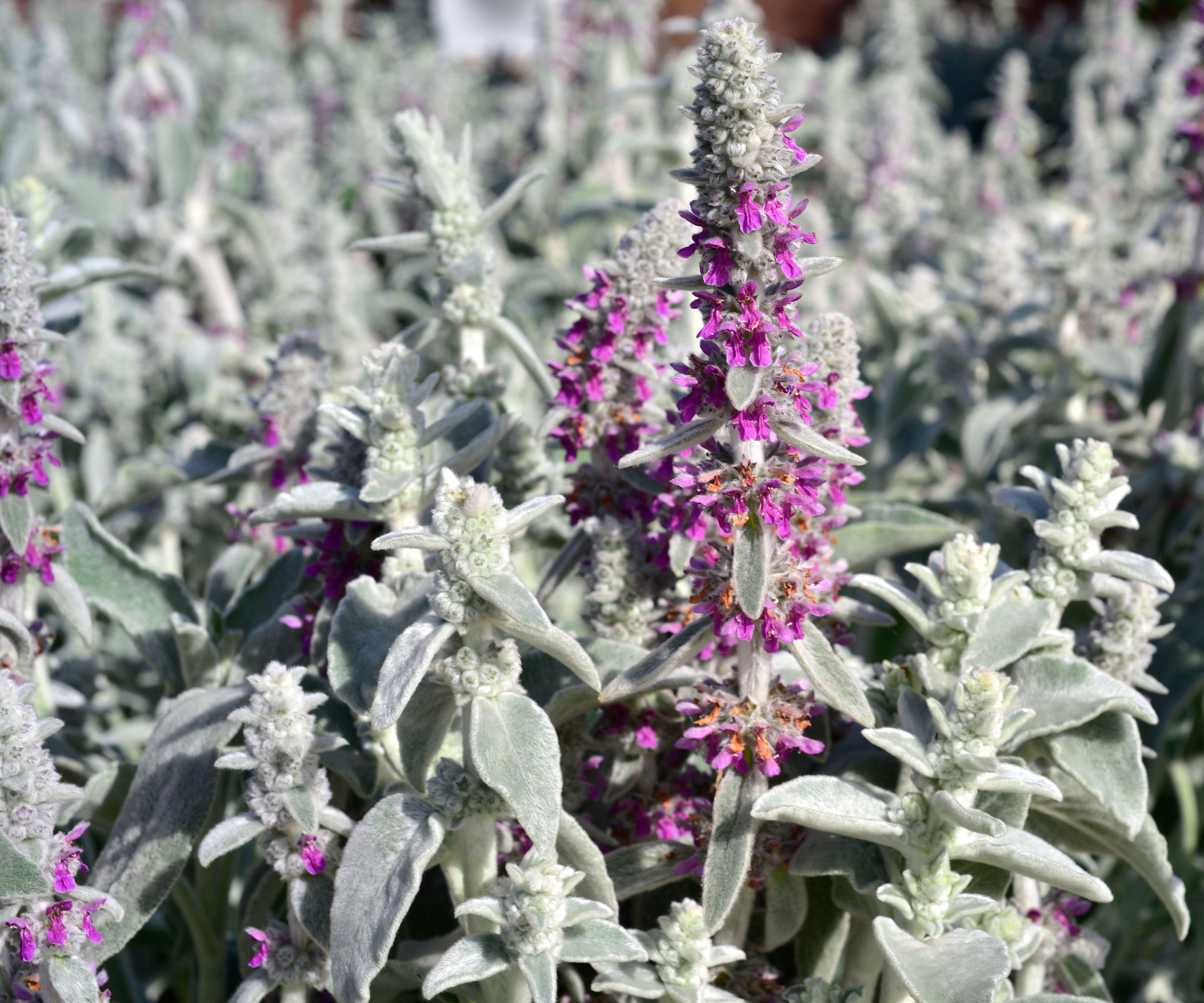
These plants are so easy to grow but it's still a good idea to get them off to the best possible start with our lamb's ears care and growing guide. If you've picked up plants from the garden center or local nursery give them a little water before planting to make sure the rootball isn't dried out.
Dig a hole slightly larger than the container, then carefully remove the plant. You can add a bit of compost to the hole prior to planting but lamb's ears don't really need fertilizer to thrive. Position the plant in the hole with the crown level with the soil surface. Backfill with soil, then water thoroughly.
If you have decided to plant a few lamb's ear plants at the same time, space them around 12 inches apart to ensure good air circulation and prevent the patch of ground from becoming overcrowded. Water new plants thoroughly but don't let the soil become waterlogged as they prefer dry conditions and are drought-tolerant once established. Overwatering can also lead to issues with pests and diseases, so once plants are established only water them during really dry periods.
Where to plant lamb's ears
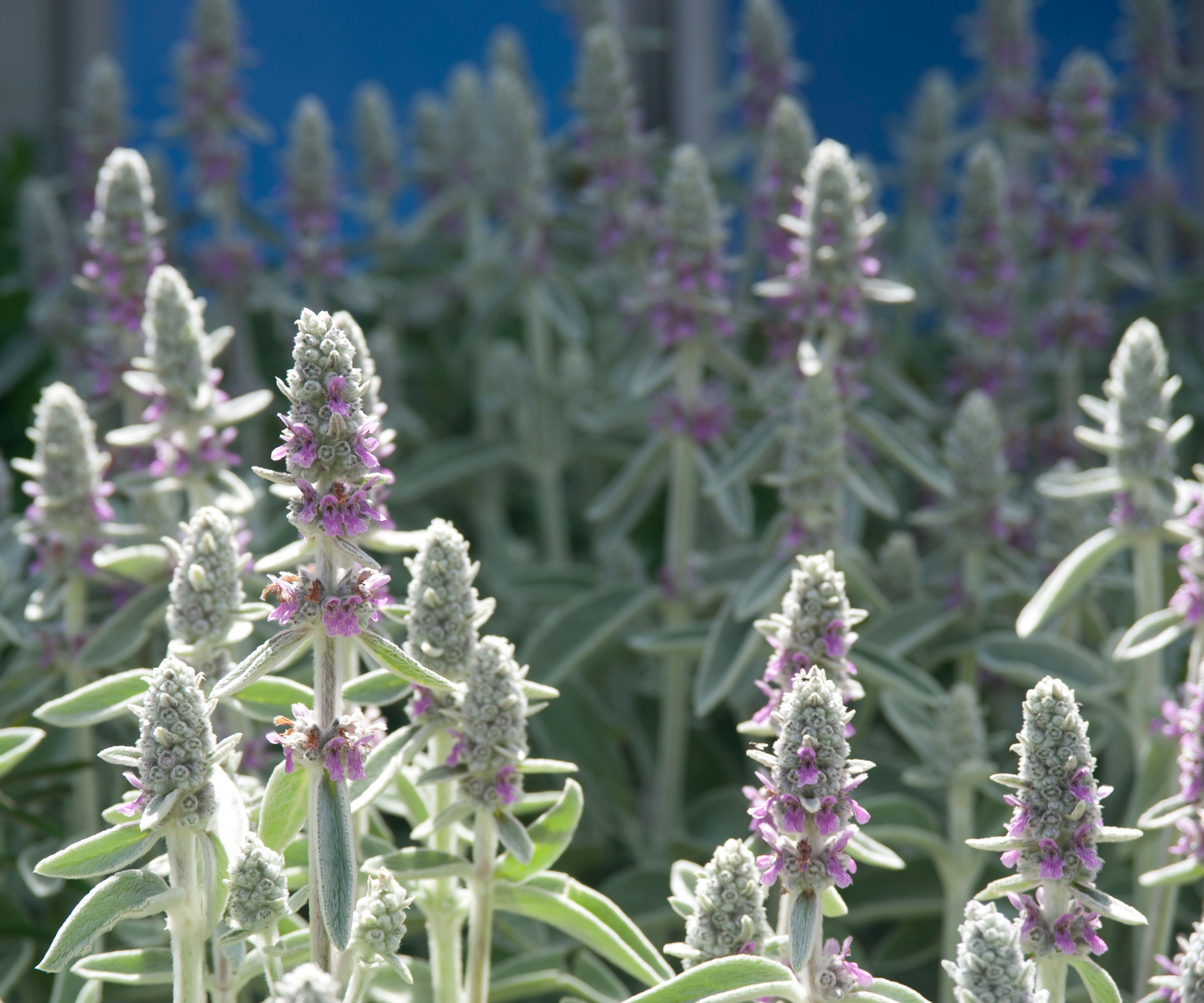
Lamb's ears can be used for naturalistic prairie planting and cottage garden ideas, as well as being a staple if you want to create a foliage border. It's a go-to for ground cover if you don't like the look of bare soil patches in your borders. It grows well in average, dry to medium, very well-drained soils. But really lamb's ears can easily be grown in any soil, even a really poor quality one.
It's a ground cover plant so will quickly spread without the need for rich and fertile soil. It spreads through stems rooting at the nodes, and will need dividing every couple of years or so to get air into the plants.
Lamb’s ears grow best in a position with full sun to partial shade, where it receives at least 6 hours of sunlight every day. If you live in a hot climate and the sun is blazing lamb's ears will benefit from a little afternoon shade to protect it.
Lamb's ears is a vigorous grower, producing creeping stems that root along the soil, and creating dense mats of foliage. If you want to limit the spread remove the flower stalks before it goes to seed.
Watering guide – less is more

Lamb's ears are drought tolerant plants that thrive in dry climates. This means you only need to water your plants while they are getting established and also when the soil is really dry.
Give established plants about an inch of water a week during dry spells, keeping the foliage as dry as possible by watering the soil at ground level and not letting it spray over the leaves of your plants. Avoid overhead watering, as the leaves can trap water.
If you live in an area that gets high rainfall or water your plants carelessly with the hose this can lead to a build up of rotting leaves that can harbour pests and diseases, resulting in powdery mildew and other fungal diseases.
To prevent this remove any rotting leaves regularly. Adding a layer of mulch around the base of your plants can also help prevent soil moisture from coming into contact with the leaves.
How to prune lamb's ears
This hardy, cold-tolerant plant will withstand temperatures well below freezing without special protection, but the foliage will die back to the ground in areas with harsh winters. Trim the plant back in the spring and remove any dead or brown leaves. When the weather and soil warm up, the plant will send up new, green growth.
After the flowers fade in summer trim flower stalks down to the base to keep your plants looking tidy and prevent the plant self-seeding (unless, of course, you want it to). At the same time cut back any dead or tired foliage.
Plants may also benefit from being thinned out in midsummer to expose them to more sunlight and to improve air circulation, which can reduce the chance of rot. Meanwhile find out how to divide plants once they are established.
They will need to be divided every three to four years in spring to prevent overcrowding and to improve plant health. Dig up the rootball and use a sharp knife to divide into healthy, rooted sections, which can then be replanted or shared with friends and family to spread the lamb's ears love around.
Common diseases and how to deal with them
Lamb’s ears have very few pest problems, but can develop root rot and foliar diseases in overly wet conditions caused by high humidity or continual heavy rain. Remove any build-up of wilting or rotting leaves as soon as you see them, because if you linger your plants will rot away.
Make sure the soil is as well-drained as it can be by finding out how to improve garden soil and amending it accordingly if it's prone to becoming heavy and waterlogged. This can be done by digging in horticultural grit or pea gravel as a key part of your lamb's ears care and growing guide.
Shop lamb's ears plants
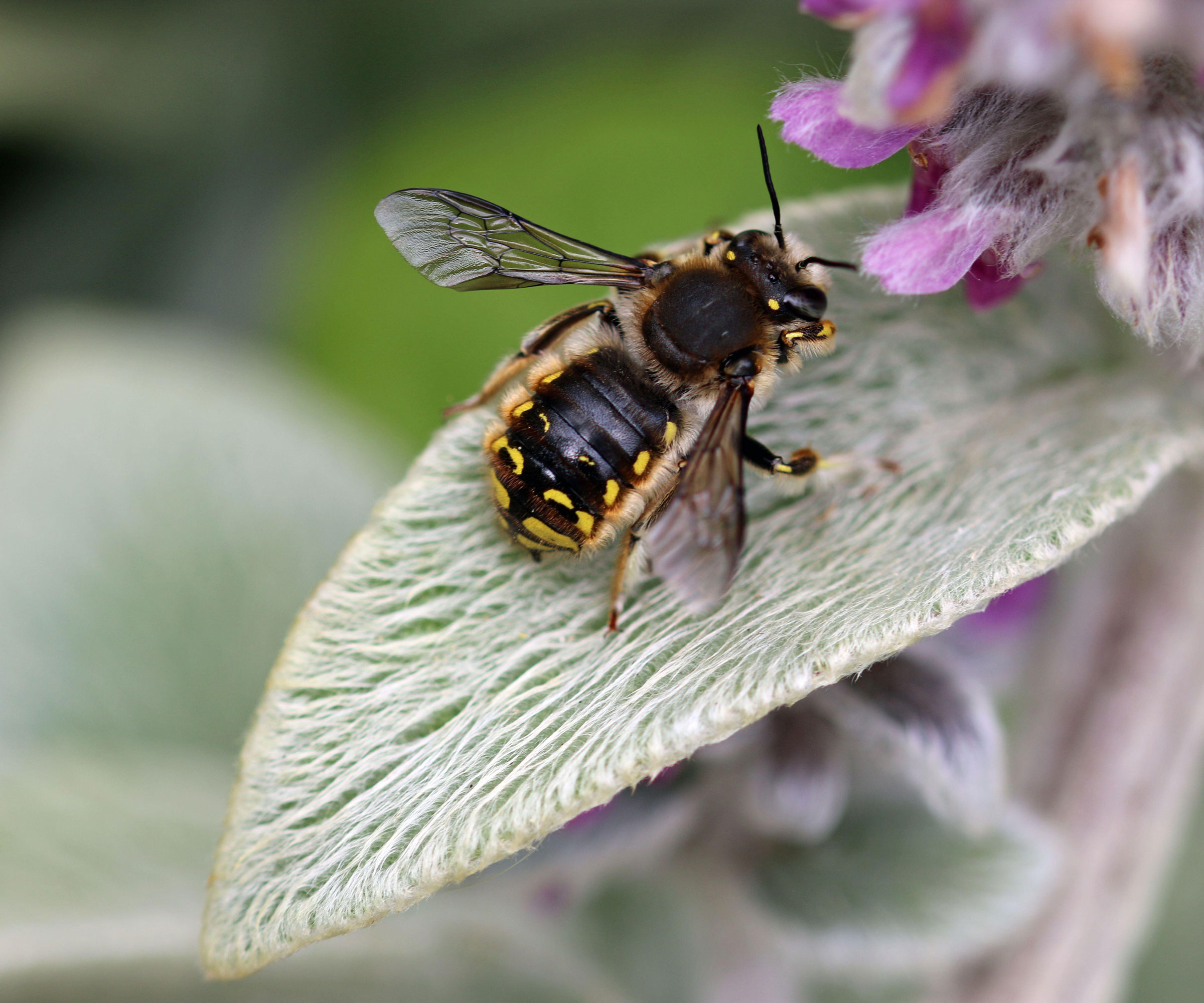
- For dusky pink flower spires that are a real magnet for bees and butterflies try 'Helene Von Stein' available here from Nature Hills. This variety has large leaves with gorgeous silver coloring, and a mounding habit. Try planting 'Helene Von Stein' in 'drifts', by digging your planting holes in a zig-zag pattern.
- The 'Silver Carpet' variety is a non-flowering form of lamb's ears that's all about creating a carpet of velvet-textured, silver-grey foliage that makes an ideal edging plant for a sunny border. The lamb's ear-shaped leaves of this plant are soft and silver in color, and completely fuzzy. 'Silver Carpet' is available here from Amazon
- If you're interested in growing lamb's ear seeds, 'Silver Spire' is a vigorous-growing silver-leaved variety that forms mats, gently spreads, and has pretty lavender flowers in midsummer.'Silver Spire' seeds are available here from Walmart.
Lamb's ears are one of the best xeriscaping plants too if you're interested in ways of reducing your water usage in these times of climate change. These Mediterranean plants work well in gravel garden ideas as well. In fact, they really are an excellent all-rounder and you won't regret including them in your planting design ideas.







